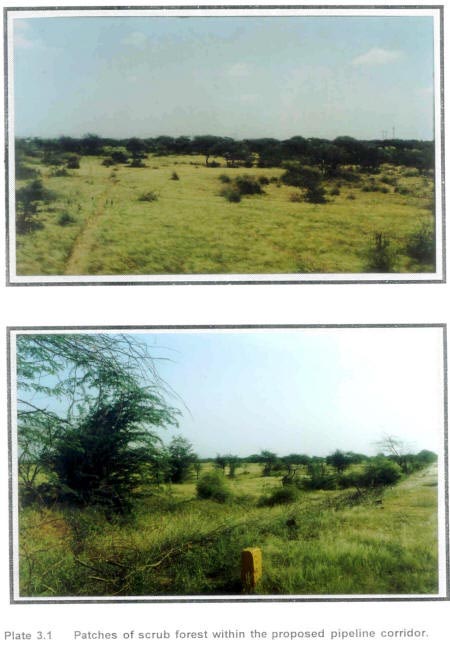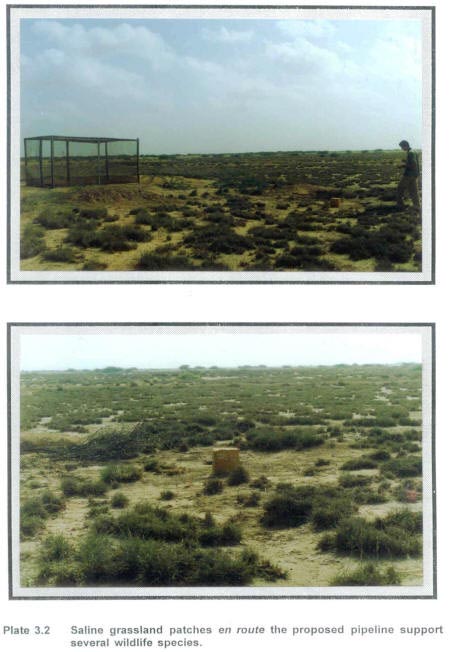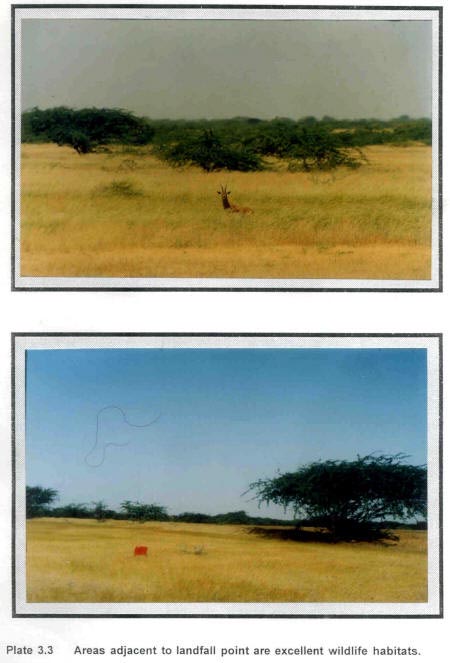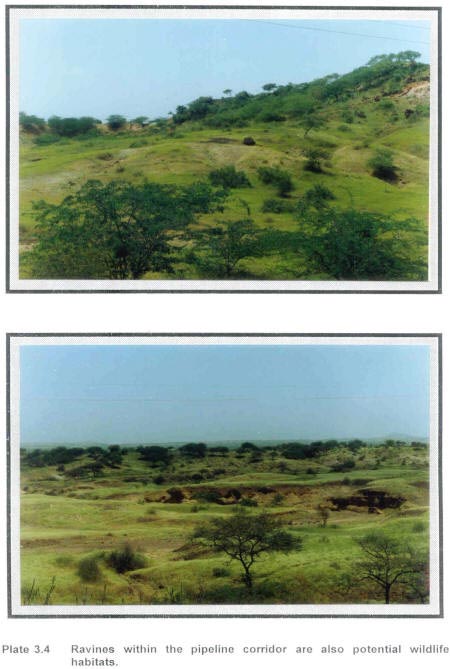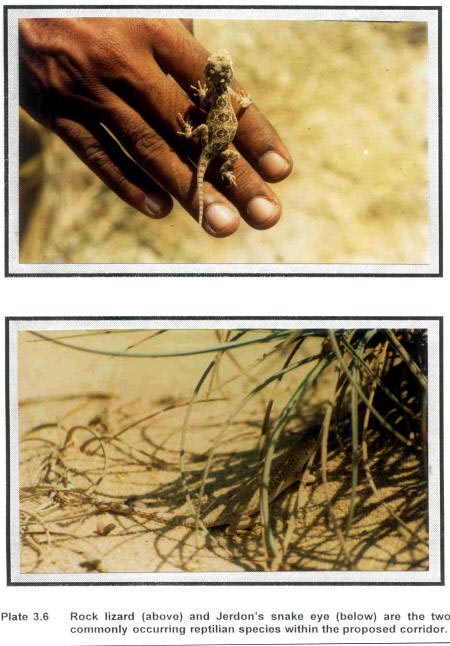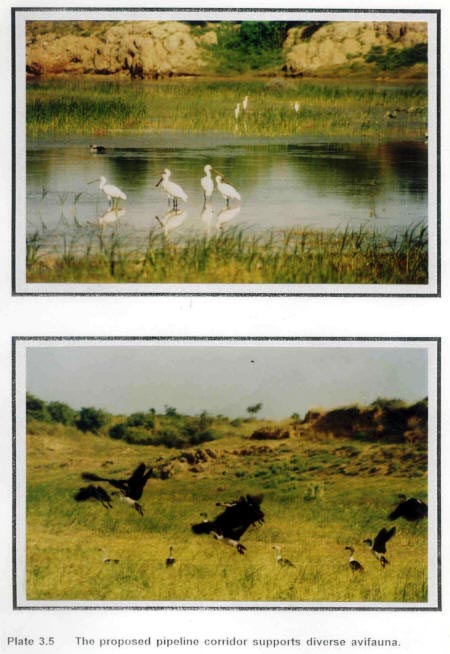Baseline Status
|
The foremost requirement of impact assessment procedures is the establishment of baseline scenario of the pre-project natural environment. This would allow the assessment of project related changes in the select environmental indicators, these being floral and faunal components in ecological assessments, like the one in hand. Probable changes in the habitat quality and quantity, distribution and density of wild animals and changes in behavioural and ecological responses of wildlife species are obvious outcome of any physical change brought about in their immediate environment. Linking project related actions to some or all of the changes anticipated in the natural environment is only possible if a precise information and if possible environmental inventory of the project environment is prepared prior impact prediction. The following pages of this section are therefore devoted to compilation of the information on the ecological aspects of the project environment. 3.1 PROJECT AREA
3.2 WILDLIFE HABITATS
3.2.1 Forests There are number of abandoned bauxite quarries in the ravines near Sanosara village between Bhuj and Rapar Gadhwali. The entire area is gently undulating. Due to natural regeneration, the area has been transformed into open scrub jungle mainly comprising of scattered growth of Prosopis juliflora, Acacia leucophloea and Cassia occidentalis. 3.2.2 Grasslands The scattered grassy patches between Sanosara and Bhuj can be classified under Desert Thorn Scrub. This is characterised by Acacia senegal, A. leucophloea and Prosopis juliflora that stand apart singly or in small groups in more or less heavy grass cover comprising of Dichanthium annulatum, Cenchrus ciliaris, C. ciliaris, Sehima nervosum, Sporobolus marginatus, etc. 3.2.3 Wetlands Table 3.1 Major river crossings en route the proposed pipeline project.
Source: EIL, Gandhidham 3.3 WILDLIFE VALUES The proposed pipeline corridor has several wildlife habitats including scrub forests and grasslands that are being overgrazed and over exploited for their natural resources. As a result of which these do not support very diverse fauna. The dense scrub jungle near the landfall point provides semi arid scrubland habitat for most species adapted to arid climate and sparse vegetal cover. chinkara (Gazella gazella), nilgai (Boselaphus tragocamelus) and black buck (Antelope cervicapra), are some of the ungulate species which have been reported from this area. The survey team also had sightings of chinkara in the dense scrub vegetation near the landfall point. This dense scrub habitat en route the pipeline is also a part of the existing range of Indian Grey Wolf (Canis lupus), which is an endangered species in schedule I of Indian Wildlife (Wildlife (Protection) Act, 1972). Several wildlife surveys in the recent pasts in the state of Gujarat have further confirmed this dense scrub forest as an ideal habitat for the Indian Grey Wolf (Shahi, Jhala and Giles, 1991). Although, the total number of wolves in Gujarat in 1990 has been estimated to be 190, the density estimates or the actual number of the individuals in this habitat is neither available nor could be estimated during the study of the project impacts (Jhala and Giles, 1991). This scrub jungle is also significant due to the fact that these form a part of breeding habitats of wolf population in Gujarat (Fig. 3.1). The other carnivore species of conservation significance that have been sighted from this area are Caracal (Felis caracal), Desert cat (Felis libyca) and Hyaena (Hyaena hyaena). The common reptilian species of this area are Jerdon's snake eye (Opisops jerdoni) and Rock lizard (Psamophilus sp.) (Plate 3.6).
The Kachchh Province supports diverse avifauna including large number of waterfowl that migrate to this area during winter (Plate 3.5).
The commonly occurring species of birds sighted during the survey are listed in Table 3.2. Table 3.2 List of bird species recorded from Landfall point
The open scrub jungle of ravines are in highly degraded form because of their past use as bauxite quarries. Very sparse vegetal cover, few palatable grass species and its proximity to the highway has fairly lowered its potential to support diverse fauna. The few species that have been reported to occur are Nilgai (Boselaphus tragocamelus), Hyaena (Hyaena hyaena) and Jackal (Canis aureus). Of the reptilian species, characteristic of this province, some of the species like Monitor lizard (Varanus sp.) and Spiny tailed lizard (Uromastyx hardwickii) have also been reported/sighted within the proposed pipeline corridor. These species are also fairly common in the other stretches of the pipeline corridor. The grassland habitats in the pipeline corridor included the marshy saline grassy patches near the landfall point and the desert thorn and scrub lands with grassy undergrowth near Bhibhapar and Sanosara village. The saline patch of grassland in the pipeline tract is fairly degraded on account of high grazing pressure from domestic animals and resource exploitation by local community. This grassland has very little potential to support large grazing ungulate species. A few reptilian species that have become adapted to the degraded habitat condition of this area include Monitor lizard (Varanus sp.) and Spiny tailed lizard (Uromastyx hardwickii). Grasslands with desert thorn scrub vegetation interspersed with agriculture fields are ideal wildlife habitats supporting carnivorous species including desert cat, caracal and wolf, ungulate species including chinkara and nilgai and avian species including the bustards and a wide variety of other terrestrial birds. At present the Great Indian Bustard (Choriotis nigriceps) which is a highly endangered species owes its increasing rarity to the shrinkage of its few residual habitats in the country. Till, about the early 90's the Great Indian Bustard was widely distributed in India (Fig 3.2). Hunting and destruction of grassland habitats led to the restriction of Great Indian Bustard habitats to a few isolated pockets in only six states of India (Rahmani and Manakadan, 1988). Although some conservation efforts to protect GIB have been made through setting up of protected areas, these have not been adequate for the protection of this bird. The importance of these grassland habitats interspersed with agricultural fields is greatly recognised in providing a mosaic of habitat patches and in maintaining the contiguity with other bustard habitats in the state. Presence of Houbura bustard (Chlamydotis undulata) provides an added significance to these habitats along and en route the pipeline (Ali and Rahmani, 1988). The information on aquatic wildlife species could not be generated as the rivers en route the pipeline are not significant wetland habitats on account of their being only seasonal water sources. |
Last Updated: October 8, 2015


